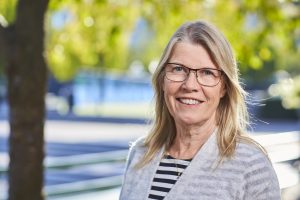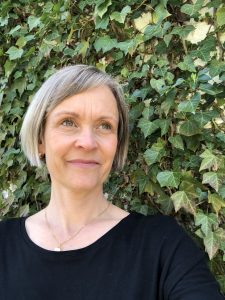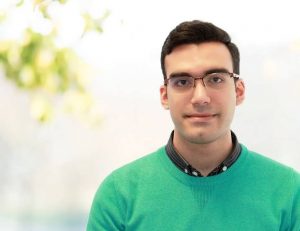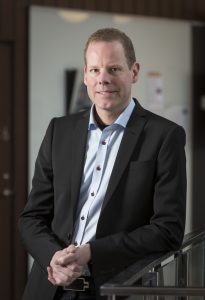Modeling of recycling in life cycle assessments – publication of project report
The final report from the project, Modeling of recycling, has now been released. The Swedish Life Cycle Center, and partners, aimed to find the most correct method for how to model recycling in life cycle assessments and similar tools. However, when the project went out to find and test methods for modeling of recycling – they found that there are pros and cons to most of the methods that exists today.
Since the 90s, Life Cycle Assessment (LCA), and the need to find a method on how recycling should be modeled, has been a burning topic. In 2018, the project modeling of recycling started that aimed at analyzing and debating how recycling should be modeled in life cycle assessment (LCA) and similar environmental assessments, as well as contributing to international harmonization processes such as the international LCA standard and the EU guidelines for Product Environmental Footprint. During the last couple of years, as the project progressed, the project group focused on case studies to test the methods at hand. With a hope to, not only increase the knowledge on how recycling can be modeled in LCA but for both society and industries to find a desire to understand the importance of it. The correct method can have a decisive impact on environmental assessments of products with a high content of recycled material.
The last workshops of the project were held during spring 2020 where different actors and representations from several products lifted their opinions, which has been valuable to the knowledge required for understanding the limits and possibilities for different materials.
Since the last workshop, the final project report has been released, and the organizations involved have a positive outlook on things even though the results show – there is no one method to rule them all.
” We confirmed what I thought from the start: it is difficult to find a single method because the requirements on the method vary between the applications.”
| According to the project manager, Tomas Ekvall, Chalmers University of Technology, the choice of method will determine to what extent the LCA gives producers incentives to use recycled materials and to design products for recycling. It could influence what policymakers focus on, and also influence consumer behavior when it comes to buying recycled products, thereby contributing to source-separation of waste.
– The most valuable outcome is the increased knowledge project partners gained from the discussions throughout the project, there are new insights which is great. |
|
|
|
Karin Östman, Jernkontoret (the Swedish Steel producers association), clarifies what this means to the steel sector. She states that the model used for calculating environmental savings through recycling is as close to reality as possible.
– Now that environmental and climate footprints are a required part of procurement’s, it will help to use the model for comparing suppliers. Both between competing products with different materials, such as wood, steel, or concrete – but also between competing steel producers. |
Involved organizations
| Among the different organizations involved during the projects, is Tetra Pak – a Swedish packaging company. Their Senior Environment Specialist, Erika Kloow feels that one of the most valuable outcomes was the part describing different allocation methods, including example calculations.
– This helps to understand the methods and the attributes incentivized by the method, ie recycling at end-of-life, recycled content in the product, or both. |
|
“The gap between the lowest and highest result among methods were as high as 200%, which only shows how careful we as practitioners should be to avoid greenwashing.”
|
|
Both Jonas Larsson, SSAB, and Seyed Salehi, KTH, lifts new learning on how the choice of method can lead to different results.
– The gap between lowest and highest result among methods was as high as 200%, which only shows how careful we as practitioners should be to avoid greenwashing, Seyed says. Jonas highlights how there’s now a better understanding of modelling recycling in LCA which he thinks will benefit them well in both external communications, and while developing business practices. |
What about the future?
Since the project focused on post-consumer waste, Tomas sees an interesting chance to further investigate to what extent the methods, and the conclusion of the project, hold for the recycling of production waste.
– I’d also like a deeper discussion on how accurate different methods are in modelling foreseeable consequences of recycling and using recycled materials.
As for the organizations, there are plans to continue working with finding the correct methods that can apply to their line of work.
“I would say that our ability to use methods for modelling recycling has been strengthened when using LCA as a basis for strategic decisions.”
| Jonas Larsson, SSAB, says that they have developed new environmental product declarations (EDP) in parallel with the project which gave them a chance to put the knowledge to practice.
– Even if we are following a well-defined method for our EDPs, I would say that our ability to use methods for modelling recycling has been strengthened when using LCA as a basis for strategic decisions. Erika Kloow, Tetra Pak, says that they now have a good toolbox and increased understanding of the dynamics of different allocation methods. And further, they believe that both the impact of recycled content and recycling rate, are key attributes for packaging systems. |
|
The question and discussion about how to model recycling in life cycle assessements will continue. One other project has already started within Swedish Life Cycle Center where the aim is to increase the knowledge on whether results from LCA gives the wrong incentives, favoring energy recovery over material recycling for plastics. It also aims to increase knowledge about if this problem can be solved by the use of Factor B in the product environmental footprint (PEF) methodology and/or by applying a wider system perspective on energy recovery that includes imports of waste and the subsequent waste management in the exporting countries. Read more about that project here.
More information
The project report can be found here.
A recorded webinar presenting the results from the project can be found here.
Read more about the project here.
Text: Hiba Fawaz and Maria Rydberg, Chalmers





